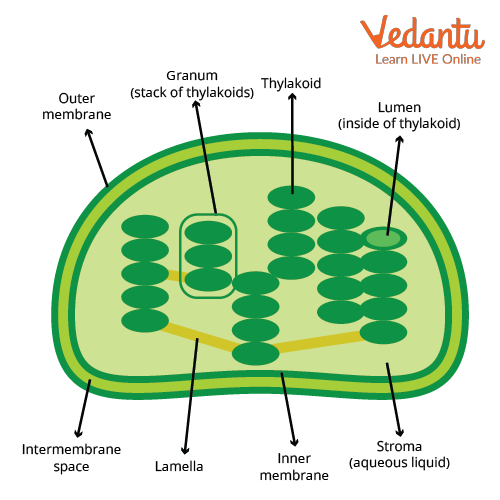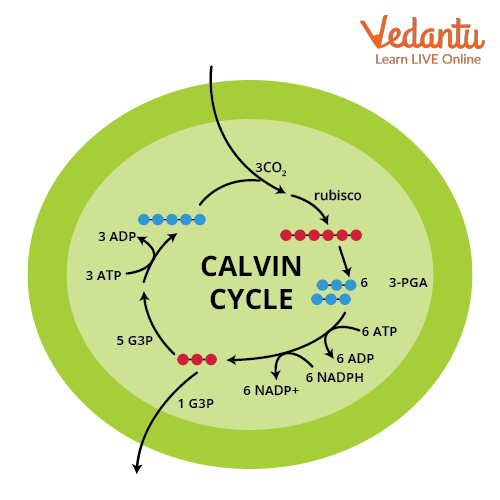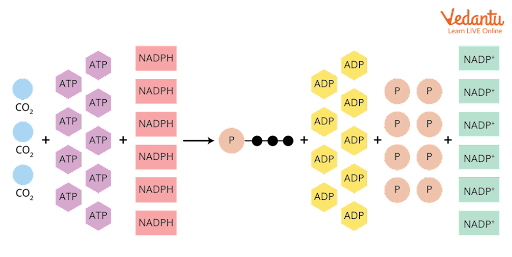




An Introduction to Dark Reaction
Photosynthesis consists of two arrangements of responses: light and dark reactions. These reactions are in some cases referred to as light-dependent reactions and light-independent reactions, respectively.
Dark reactions do not require sunlight and can occur even when it is not present. The energy molecules created during light processes are used in dark reactions. Food is actually synthesised in these reactions.
The dark reaction of photosynthesis is frequently known as the Calvin cycle, after Melvin Calvin who found it. It was founded by three researchers, specifically Calvin, Benson, and Bassham. Thus, this cycle is additionally called the ‘Calvin-Benson-Bassham cycle’. This reaction is also called numerous different names, for example, the C3 cycle or reductive pentose phosphate cycle. The plants that have the Calvin cycle are known as C3 plants.
What is Dark Reaction?
Dark reaction is a series of reactions that include carbon fixation, reducing the resultant molecule to make glucose, and regenerating the carbon-fixing substrate. All of these events take place without the usage of any light energy from the Sun, instead of relying on ATP and NADPH created during light reactions that did require light energy. Plants use the dark reaction to convert CO2 from the environment into glucose, a sugar that may be stored as energy.
Site of Dark Reaction of Photosynthesis
There are two reactions in photosynthesis: light and dark reactions.
Light reaction of photosynthesis requires light and occurs in the thylakoid.
The dark reaction of photosynthesis isn't reliant upon daylight; however, it doesn't mean it doesn't happen in its presence.
The dark reaction happens both in the presence and absence of daylight.
This reaction happens in the stroma of the chloroplasts which are cell organelles known as the ‘kitchen of the cells’.
The dark phase of photosynthesis is the genuine stage where food is synthesised by the plants and it utilises the energy created by the light reactions.

Site of Photosynthesis Light and Dark Reaction
Steps of Dark Reaction
The dark reaction of photosynthesis utilises ATP and NADPH to create energy molecules.
It doesn’t require any photosystem.
Photolysis of water doesn't happen.
Photosynthesis in higher plants' dark reaction is called so on the grounds that it doesn't need light energy.
The C3 and C4 cycles are involved in the dark phase of photosynthesis.
C3 Cycle
This cycle involves three major steps as explained below:
Carbon-fixation:
Ribulose-1, 5-bisphosphate combines with carbon dioxide to fix it to a 3-carbon compound 3-phosphoglyceric acid.
The catalyst RuBisCO is associated with the interaction.
Ribulose-1, 5-bisphosphate is a five-carbon compound that leads to the formation of two molecules of 3-phosphoglyceric acid.
Reduction:
2 atoms of ATP and NADPH fix one particle of carbon dioxide to frame glyceraldehyde-3-phosphate.
3PGA uses 6 ATP molecules to form 1, 3-phosphoglycerate.
In the subsequent stage, 6 NADPH frame glycerol-3 - phosphate.
Regeneration:
Synthesis of glucose and regeneration of RuBP occurs in this step of the cycle.
Some glyceraldehyde-3-phosphate particles go through a progression of responses to frame glucose.
The RuBP recovers to proceed with the cycle.

Steps of Dark Reaction of Photosynthesis
Photorespiration
Photorespiration is a cycle that includes the loss of fixed carbon; such as CO2, in plants within the presence of light.
It takes in oxygen and releases carbon dioxide in the presence of light.
It starts in the chloroplasts.
This cycle doesn't deliver ATP or NADPH.
It is a wasteful process.
C4 Cycle
Another option, an extremely proficient pathway utilised by plants living in regions with low degrees of carbon dioxide, is to change carbon dioxide into a structure usable to plants during photosynthesis.
In C4 photosynthesis, where a four-carbon compound is created, extraordinary leaf-like structures permit carbon dioxide to move in 'bundle sheath' cells around Rubisco.
This design conveys carbon dioxide directly to Rubisco, actually eliminating its contact with oxygen and the requirement for photorespiration.
Dark Reaction Equation
The dark reaction of photosynthesis is also called the ‘carbon-fixing reaction.’
It is a light-independent cycle where sugar particles are made from carbon dioxide and water atoms.
Glucose is the end-product formed with the help of ATP and NADPH.
ATP + NADPH + CO2 → ADP + NADP + Glucose is the equation of the dark phase of photosynthesis.
Product of Dark Reaction
The primary result of the Calvin cycle is glyceraldehyde 3-phosphate or G3P, which will be utilised to deliver glucose.
The other two products are ADP and NADP+.
The end product of the reaction is Glucose.
3-phosphoglyceric acid is the first stable result of photosynthesis during the dark phase.
It is shaped by the response of RUBP with CO2 within the vicinity of RuBisCo.

Overall Reactants and Products of Dark Reaction of Photosynthesis
Conclusion
This article gives an insight into photosynthesis in higher plants' dark reactions, dark reactions are named so because they don’t occur in the presence of sunlight but are dependent on the products of light reaction. The goal of the dark reactions is to combine the energy from ATP and the energised electrons and hydrogen ions from NADPH with CO2 to produce glucose or sugar. The dark reactions generate sugars through a series of cyclical reactions that begin with carbon fixation. The ATP and NADPH produced by the light reactions are consumed by the dark reactions. It involves three major steps: carbon fixation, reduction and regeneration.
FAQs on Photosynthesis in Higher Plants Dark Reaction for NEET
1. How many questions can you expect from Dark Reaction of Photosynthesis in the NEET examination?
There have been questions on this topic once every two years. The questions are basic, so the student is advised to revise the concept thoroughly. Most of the students get confused between the different phases and the photosynthesis cycle. It is a very important topic to be covered in order to qualify for the exam.
This chapter holds up to 10% weightage from Biology in the NEET exam. It is a very interesting and basic topic to cover and to increase the score. The student should make separate tables to revise the different reactions of the photosynthesis to avoid further confusion.
2. What are the most important topics from which the questions are asked?
The examination mainly asks about the different sites of the reaction and the products which are formed at the end of the reaction, the total number of molecules of the compounds as reactants, and the products of the reaction. ATP and NADPH role in the reaction and the role of rubisco and photorespiration are some of the hot topics for the examination. Different types of anatomy followed by the desert plants, and major differences between the anatomy and organelle of C3, C4, and CAM plants are some other important topics.
























